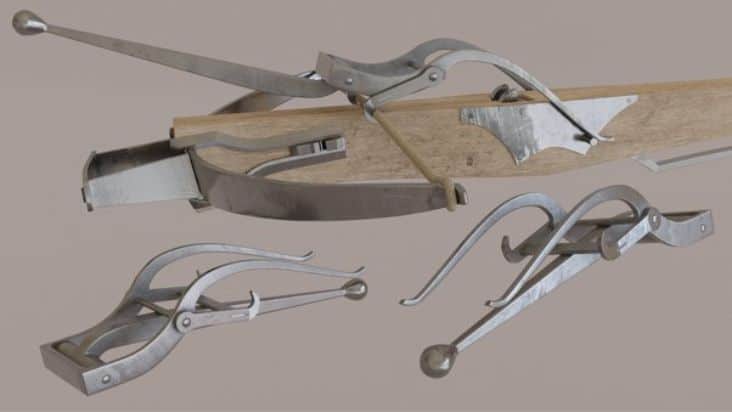The History of Crossbow: From Warfare to Modern Sports
The crossbow, a powerful and deadly weapon, has a fascinating history that spans thousands of years. Its origins can be traced back to ancient civilizations, where it played a significant role in warfare and hunting.
Over time, the crossbow evolved, becoming more sophisticated and adaptable. Today, it is used in sports and recreational activities and holds a place in history as a symbol of innovation and military strategy.

In this article, I will delve into the rich history of crossbow, exploring its early origins, its use in warfare throughout the ages, the modernization of the weapon, and its transition into the world of sports.
Early Origins of the Crossbow
The history of the crossbow dates back to 400 BCE when it was first discovered in ancient China during the Warring States Period. The crossbow was initially used for hunting, but it was only a short time before its application changed. Crossbow proved to be a groundbreaking weapon in warfare, as archers were no longer required to exert excessive strength or skill in aiming and releasing arrows.
The Chinese army quickly adopted the crossbow into their military arsenal, skyrocketing its significance on battlefields. By 209 BCE, the Chinese army had optimized and improved the crossbow’s design further, making it a powerful machine capable of piercing even metal armor.

The crossbow was also introduced to the Western world by Alexander the Great, who discovered it during his conquests of the Persian Empire.
The Greeks and Romans took the crossbow and slightly modified its design, primarily in size and shooting range. During the Middle Ages, the crossbow played a critical role in warfare, especially as conflicts shifted from open fields to urban environments.
The Battle of Crecy in 1346 between the English and the French was a testament to this. English Longbowmen armed with crossbows decimated the French cavalry. By the 1500s, the crossbow’s use began to wane as firearms such as muskets and pistols began to take over.
Crossbow in Ancient Warfare

In ancient times, warfare was brutal and unforgiving. Armies would engage in long battles, with soldiers relying on their weapons to turn the tide of the war. One such weapon that was favored by many civilizations ‘Crossbow‘. Possessing great range, piercing power, and ease of use, it quickly became a deadly weapon of choice that often proved decisive on the battlefield.
Known as the Chukonu, it was a handheld weapon that could shoot arrows with great force. Eventually, this weapon spread worldwide, and various civilizations quickly realized the potential of the crossbow in warfare. The Romans introduced it to their armies, where it proved quite useful and was used to great effect in battles.
The Greeks also used crossbows but more often favored traditional archery. However, during the reign of Alexander the Great, he realized the importance of crossbows and encouraged their use throughout his armies. They allowed his armies to attack from afar, keeping them out of reach of enemy arrows.
Another ancient civilization that made extensive use of the crossbow was the Persians. They used them against Alexander the Great’s troops during the Battle of Gaugamela. The crossbows allowed the Persian soldiers to hit their targets with deadly precision, which helped halt Alexander’s forces from advancing further into their territory. Due to this, Persian crossbowmen were often highly valued and extensively trained in using their weapons.
The Egyptians also used the crossbow to improve their military strategy during their reign. They used crossbows in their expansion era, ultimately vital to establishing their empire. As a result, crossbow makers became highly respected professionals in the ancient world, with their weapons playing a crucial role in battles.
Medieval Advancements and Tactical Use

During the Middle Ages, advancements in crossbow design continued. The development of windlasses and stirrups made it easier to draw the bowstring and increased the weapon’s power.
Crossbows became a staple on the medieval battlefield, and their use led to the rise of specialized infantry units known as crossbowmen. These troops played a vital role in sieges and castle defenses.
The Renaissance and Crossbow Decline
With the advent of firearms during the Renaissance, the crossbow gradually fell out of favor on the battlefield.
Firearms provided greater range, speed, and ease of use, rendering the crossbow inferior. However, the weapon still found its place in hunting and as a symbol of nobility and status.
Modernization of the Crossbow

The crossbow has been a staple in warfare and hunting for centuries, and its basic design has changed very little. However, the crossbow has undergone significant modernization in recent centuries to improve its durability, accuracy, and power.
This modernization has led to some of the most advanced crossbows ever created, and its rich history is full of interesting developments. The earliest crossbow designs were made of wood, with simple pull-back mechanisms that required significant strength to operate.
However, in the twentieth century, significant strides were made in the modernization of the crossbow. The materials used to make crossbows shifted from traditional wood to fiberglass and steel, which made the weapon more durable and able to withstand the rigors of battlefield use.
One of the most significant advancements of the modern crossbow is its cocking mechanism. In traditional designs, pulling back the drawstring took a lot of strength, which made it difficult for most people to use. However, introducing more advanced cocking mechanisms made this task much easier, and it greatly increased the popularity of the crossbow as a hunting tool.
Creation of the Compound Crossbow
Another significant development was the creation of the compound crossbow. This type of crossbow uses a series of pulleys and cams, making it possible to exert a much greater force on the arrow as it is fired. This greatly increased the accuracy and power of the weapon, and it quickly became one of the favorite choices of crossbow enthusiasts.
In addition, the introduction of crossbow accessories such as scopes and silencers improved the accuracy and stealth of the weapon. This allowed hunters and recreational users to take shots at greater distances and with greater accuracy.
Crossbow in Sports

The 20th century saw a resurgence of interest in the crossbow as a hunting tool and a sport. Crossbow sports involve a variety of disciplines, and the most common is target shooting. Athletes shoot at a stationary target from a set distance.
In some competitions, participants shoot from a distance of up to 90 meters, while in others, they may shoot from as close as 10 meters. Meanwhile, field archery is where athletes move through a course, shooting at targets at varying distances and angles. Finally, in 3D archery, athletes shoot at the foam, rubber, or plastic forms of animals, which are set up in wooded courses.
The International Crossbow Shooting Union is the sole governing body of crossbow shooting. Founded in 1956, the organization aims to promote and develop crossbow shooting globally. It organizes various crossbow shooting events, including the World Cup, World Championships, and WorldWide Games.
Crossbow technology has evolved over the years, and one specific advancement has been the introduction of lasers. Lasers are now used to help athletes improve their aim. The laser beam is used to pinpoint where the arrow would hit the target. This technology is particularly helpful when shooting over long distances or when an athlete has difficulty sighting through the sight.
Crossbow sports are also popular in the United States. The National Field Archery Association is an organization that oversees crossbow shooting in the country.
The organization holds various events, including the Indoor and Outdoor Nationals. While athletes of all ages can participate, many children and teenagers are now beginning to participate in crossbow sports.
Crossbow Hunting Today

Crossbows remain popular among hunters due to their power, accuracy, and versatility. As technology advances, modern crossbows feature scopes, lightweight materials, and increased draw weight, making them highly effective for hunting various games.
Wrap Up!
The history of crossbow is a testament to human ingenuity and the constant quest for more efficient weapons. From its humble beginnings in ancient China to its prominence on the medieval battlefield and its transition into a modern sporting tool, the crossbow has left an indelible mark on history.
While no longer a primary weapon of warfare, the crossbow continues to captivate enthusiasts with its power and precision. Whether used for competitive target shooting or in the pursuit of a game, the crossbow’s evolution serves as a reminder of the ongoing quest for innovation and improvement.
As we look to the future, the crossbow will continue to be admired for its historical significance and enduring appeal as a versatile and exhilarating weapon.
